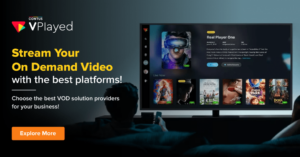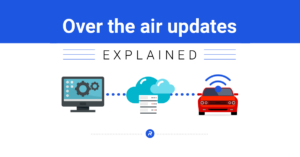IPTV stands for Internet Protocol Television. It refers to the delivery of television content over Internet Protocol networks instead of traditional cable, satellite, or terrestrial broadcast systems.
IPTV provides digital television service through a broadband connection and allows viewing live channels as well as video on demand. It brings a cable-like viewing experience to internet streaming.

How IPTV Delivery Works
There are three main methods for delivering IPTV services. Managed IPTV involves the service provider controlling a dedicated IPTV network typically deployed over a private fiber or managed IP infrastructure.
This closed system assures quality. Over-the-top IPTV involves the IPTV service riding on top of existing broadband connections without relying on a private network.
This is an open Internet delivery model. Hybrid IPTV combines dedicated IPTV distribution over managed networks with an OTT component accessing additional content over open broadband internet.
All IPTV architectures transmit media as encrypted IP packets but delivery infrastructure differences affect the quality of service. IP-based delivery ultimately provides more flexibility since the video can be transmitted across any IP network.
Key Components of an IPTV Service
An end-to-end IPTV solution consists of several layers:
- Content acquisition – IPTV providers acquire media rights to linear channels and video-on-demand from networks, studios, and aggregators.
- Encoding – The audio, video, and metadata are encoded in IP transmission protocols like MPEG. Encoding compresses streams.
- Transmission – Encoded content is transmitted over the provider’s IP network to distribute media to regional headends.
- User profiles – Subscriber information, packages, and entitlements are managed in databases that authorize access.
- Digital rights management – Encryption mechanisms protect media from unauthorized viewing or piracy during transmission.
- Set-top box – Converts delivered IP streams into viewable video output on subscriber televisions with PVR and VOD functionality.
- Middleware – Provides a user interface for navigating channels, programming guide, search, recommendations, and other IPTV features.

IPTV Compared to Cable and Satellite
IPTV offers some advantages over traditional pay TV platforms:
- Interactive features – Seamless integration of interactive apps and program overlays is not possible with broadcast.
- Targeted content – Localized or personalized video and ads can be inserted into the IP stream dynamically.
- Time shifting – Built-in DVR and catch-up viewing support start-over and replay of linear channels.
- Picture quality – Provides full HD quality without compression artifacts introduced in QAM cable systems.
- A la carte pricing – IP delivery enables packaging and pricing flexibility since channels are unbundled.
- Multi-device delivery – IP-based media distribution extends access across TVs, mobile devices, computers, and game consoles.
- Bandwidth efficiency – IP multicast optimization means less bandwidth required than QAM broadcast to deliver channels.
However, satellite still maintains an edge over IPTV in areas where broadband internet speeds are low. IPTV quality is only assured under optimal network conditions.
Main Components of an IPTV Service
A full end-to-end IPTV service consists of a few core components:
- Live TV – Offers familiar linear channel feeds with broadcast networks, news, sports, and other familiar programs on live schedules.
- VOD Library – Extensive on-demand library provides access to movies, TV shows, special events, and other content.
- Interfaces – App UIs support viewing, search, recommendations, profiles, parental controls, and more.
- Cloud DVR – Allows recording and time shifting of live channel feeds by storing content remotely in the cloud.
- Restart/Replay – Permits restarting linear programming already in progress from the beginning.
- Multi-View – Watch different channels simultaneously or quickly change among them.
- Interactive Features – Applications like games, chat, polls, and shopping overlayed on programming.
- Mobile support – Multi-device apps extend viewing to smartphones, tablets, and laptops while in or out of the home.
Main IPTV Deployment Models
There are a few primary ways IPTV services are commercially deployed:
- Telco TV – Telecom companies like AT&T UVerse leverage their broadband and fiber networks to deliver IPTV services.
- ISP-Delivered – Internet service providers package IPTV with internet access over their residential broadband connections.
- Over-the-top – Streaming providers deliver cloud-based IPTV over any open internet connection rather than owned infrastructure.
- Direct-to-consumer – Channels take IPTV direct-to-consumers as standalone streaming services over open public internet rather than through TV providers.
- Business services – Private IPTV networks transmitting broadcast content, menus, and information to displays within offices, hospitals, and hotels.
- Satellite hybrid – Satellite TV providers incorporate IP streaming of supplemental OTT content delivered to their set-top boxes.
IPTV gives providers an efficient protocol to merge television, VOD, and interactive services into customized bundles with flexible pricing.

Benefits of IPTV for Consumers
Some of the advantages that make IPTV services appealing to consumers include:
- Unbundled pricing – Ability to mix and match desired channels rather than rigid tiers or packages. A la carte pricing models.
- Cloud DVR – Record more hours since storage is in the network cloud, not a local box.
- Replay TV – Restart shows in progress from the beginning or catch up on recently aired programs.
- On-demand content – Large VOD libraries available in addition to live channels.
- TV everywhere access – View on laptops, tablets, and phones in or away from home over the internet.
- Interactive apps – Provider-designed apps integrate directly into programming for supplemental content.
- Multiple streams – Ability to watch different channels on multiple devices without splitting physical connections.
- HD quality – IP supports full high-definition resolution unconstrained by cable QAM limitations.
- Simplified installation – Just an internet connection rather than running cables or satellite dish installs.
Challenges Facing IPTV Growth
Despite its positives, IPTV also faces some hurdles to wider adoption:
- Infrastructure costs – Building and maintaining a dedicated end-to-end IPTV infrastructure requires substantial investment.
- Bandwidth demands – Streaming bandwidth-heavy video to thousands of simultaneous viewers consumes network capacity.
- Open Internet – Regulations could limit provider control over network traffic shaping for service quality.
- Content rights – Maintaining extensive channel and VOD content licenses involves costly negotiation and renewal.
- Clogged pipes – Audience spikes for live events risk degrading connection speeds and causing buffering.
- Piracy – IP distribution provides more points of vulnerability for content to exit the network and be captured illegally.
- Walled gardens – Inability to access IPTV services on open devices like media streamers due to walled-garden DRM approaches.
- CPE investment – Providers must subsidize consumer premise equipment like IPTV set-tops and WiFi routers.
- OTT competition – Competing against unmanaged over-the-top internet TV services with similar features.
The Future of IPTV
There are some possible IPTV developments we may see moving forward. IPTV will likely continue migrating towards delivery over open broadband internet to reduce infrastructure costs.
Leveraging multicast transmission for more efficient large-scale video distribution can also help optimize networks. Integrating OTA antenna capabilities into IPTV set-tops may provide access to local broadcast channels.
Support for new video formats like 4K, HDR, and 360-degree video over IP networks will enhance quality.
Personalization features utilizing data to customize ad placement and content recommendations can improve targeting. Targeted advertising enabled by dynamic ad insertion into live IP video streams will emerge.
Access to IPTV services through popular media streaming hardware like Apple TV and Roku could expand the subscriber base. Virtual reality screens and augmented reality enhancements incorporated into IPTV apps may enhance engagement.
The growth of direct-to-consumer standalone IPTV services that bypass traditional TV providers will disrupt the market.
Advances in ABR streaming and video codecs reducing bandwidth demands of IP video will aid scalability. Blockchain integration can securely track media consumption and IP rights.
As networks evolve, IPTV will likely continue converging broadcast, VOD, and internet video into a unified system with both live and on-demand access.

Frequently Asked Questions (FAQ)
Q1. Does IPTV require an internet connection?
Ans. Managed IPTV over private networks does not require external internet. OTT IPTV relies totally on internet delivery so a broadband connection is mandatory.
Q2. How is the quality of IPTV compared to cable or satellite TV?
Ans. Quality depends on network conditions. Fiber IPTV can provide pristine quality. But open internet IPTV is subject to network congestion causing video degradation.
Q3. Does IPTV allow watching shows after they already aired?
Ans. Most IPTV providers offer cloud DVR, replay, and network PVR features to playback shows for a certain window after their linear airing.
Q4. Can I watch IPTV on all my devices?
Ans. IPTV apps are usually available for smart TVs, media streamers, game consoles, and mobile devices. However support can vary across providers. Home network connection quality also affects viewing.
Q5. Are there data caps on IPTV usage?
Ans. If delivered over managed networks, IPTV usage is unlimited. But for OTT IPTV relying on home broadband, standard data caps can apply when streaming large amounts of video content.



